Lean manufacturing and Lean Six Sigma are proven strategies to cut waste and defects in production. In UK factories, they promise sharper processes, higher quality, and lower costs. For example, a British automotive manufacturer reported a 20% increase in productivity within the first year of implementing Six Sigma, by streamlining its supply chain and reducing defects. The company was able to meet higher customer demand without increasing headcount. Another manufacturing company from Liverpool, cut material costs by 15% while lifting profitability 10%. By analysing the root causes of defects and eliminating waste, the company reduced material costs by 15% and improved profitability by 10%.
In short, Lean Six Sigma can power significant efficiency gains and cost savings. It forces firms to eliminate non-value steps, base decisions on data rather than “gut feel,” and continually refine processes.
However, there’s a catch. Imagine walking your production line: you’ve trained staff on Lean tools and tackled obvious bottlenecks, yet scrap and downtime persist. Improvements plateau if some waste remains hidden. Lean Sigma projects often only nibble at the edges if you haven’t measured your losses. In practice, you can’t fully cut waste or speed up processes without knowing where it’s hiding. As one expert notes, Lean and Six Sigma together “enable companies to achieve higher efficiency, lower costs, and improved product quality,” but only if you target the right problems.
The Missing Element: Measuring Your Losses
A key metric here is Overall Equipment Effectiveness (OEE) – often called “the gold standard for measuring manufacturing productivity”. OEE breaks production into Availability (uptime), Performance (speed), and Quality (defects). If your OEE isn’t 100%, some waste is lurking. By measuring OEE, you turn unknowns into numbers: for example, it will tell you exactly how much time is lost to breakdowns, slow cycles, or scrap. In fact, OEE is “the single best metric for identifying losses, benchmarking progress, and improving the productivity of manufacturing equipment”. That data is essentially loss intelligence – hard evidence of your biggest inefficiencies. Without it, even well-designed Lean Six Sigma projects can miss the heavy hitters, because you’re “shooting in the dark” about what hurts performance most.
What Is Loss Intelligence?
Operational Excellence frameworks explicitly build loss intelligence into the improvement process. It starts with a simple idea: anything less than ideal output is a loss. In other words, every minute of downtime, every scrap part, every excess movement on the line counts as a loss. Companies practicing Operational Excellence first define and quantify those losses. As one consultancy describes, “Zero Loss Intelligence is a comprehensive approach to waste elimination that involves all employees in the organisation to identify and eliminate sources of waste, including defects, overproduction, waiting, [and] excess processing”.
Put plainly, loss intelligence means systematically listing every scrap, delay, defect, and waste stream you have. This might involve collecting downtime logs, counting defects, mapping material flow, and even noting when workers wait or travel unnecessarily. With those numbers in hand, you can prioritise: attack the losses that cost the most. Lean Six Sigma tools (DMAIC projects, value-stream mapping, root-cause analysis, etc.) then become far more powerful because they focus on the real trouble spots, not just what’s most obvious.
Many top manufacturers adopt this philosophy. For example, EFESO’s World Class Operations Management (WCOM™) system – used by hundreds of companies – starts with Loss Intelligence. It describes this step as identifying “business-critical indicators, the improvement potential and actions that will make a major impact” on performance and profitability. In practice, that means putting in place data collection (OEE systems, production logs, quality charts) and leadership routines (daily stand-ups, leadership Gemba walks) that highlight losses daily. Once the losses are visible, the next steps (called Loss Eradication and Loss Prevention in these models) systematically eliminate root causes and lock in gains.
Tools and Techniques
To build loss intelligence, manufacturers use a mix of following methods:
- OEE Tracking: Monitor Availability, Performance, and Quality losses on each machine. OEE tells you the percentage of truly productive time and highlights whether breakdowns, slow cycles, or defects are your biggest drags.
- DMAIC (Define–Measure–Analyse–Improve–Control): This Six Sigma cycle guides problem-solving on your top losses once they’re identified.
- Value Stream Mapping: A Lean tool that maps every step of a process, exposing waste in transportation, waiting, or overproduction.
- 5S and Standard Work: Organise the workplace and standardise procedures to prevent simple errors and make problems visible.
- Total Productive Maintenance (TPM): Engage teams to keep equipment reliable. TPM teams track machine stops and introduce autonomous maintenance, attacking downtime at its root.
By combining these tools with loss intelligence data, teams can set clear targets (e.g. raise OEE by 10 points) and design improvement projects that hit the biggest inefficiencies. This turns a scattershot approach into a coherent roadmap: every Kaizen event or Sigma project connects to the larger goal of higher equipment utilisation and less waste.
Benefits of a Loss-Intelligent Approach
When manufacturers conduct rigorous loss intelligence, the results are substantial. Case studies from UK industry show it repeatedly: one factory saw a 20% jump in productivity in a year; another firm cut material scrap enough to reduce costs 15%. Problems get fixed faster, product quality rises, and flexible flow allows faster response to customers.
In short, you can only achieve full cost-effectiveness if you know where costs are hiding. With loss intelligence, you build a culture of Operational Excellence where every waste (defects, delays, downtime) is visible and attacked. Over time, this means sustained gains in output, quality, and profitability.
Next Steps: Build Your Loss Intelligence
If your goal is higher operational efficiency with lower losses, start by measuring. Make “What is my OEE?” and “What are my top losses?” core questions on your shop floor. Begin small: try recording the performance and uptime of one critical machine for a week, or map the steps of a troublesome process to find bottlenecks.
To help UK manufacturers do this, Get Certified Operational Excellence offers a 45-minute Loss Intelligence course. In under an hour, you’ll learn how to measure losses in your own plant to kick off cost-effectiveness. This quick course lays the foundation of Operational Excellence: once you can quantify losses, every improvement effort becomes smarter and more impactful.
Remember: you can’t improve what you don’t measure. Start the short course today and take the first step towards true operational excellence in your manufacturing processes.



